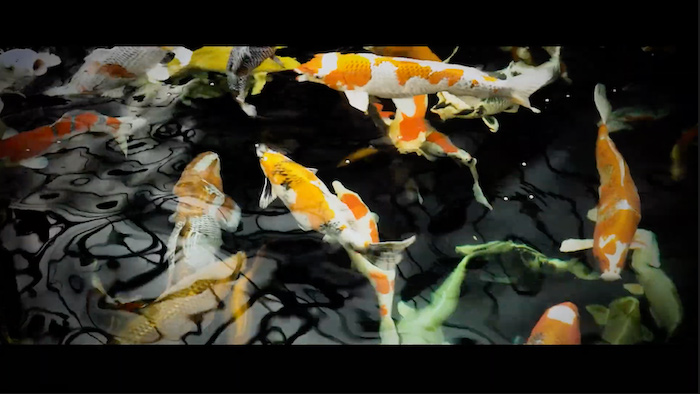
Nishikigoi, or “brocaded carp,” are a type of ornamental fish from Japan that have become a beloved icon of culture meeting nature, and reflect the country’s environmental treasures – a place with four distinct seasons, blessed with rich soil and water. Since ancient times, nishikigoi were considered a symbol of good luck. On Children’s Day in Japan, celebrated in May, rooftops are decorated with carp streamers that embody the wish for the children to be protected and successful. Also commonly depicted in traditional Japanese paintings characterized by their beautiful colors, nishikigoi serve as an example of Japanese aesthetics.
The earliest records of carp as ornamental fish can be found in the Nihon Shoki (“The Chronicles of Japan”), a book written 1300 years ago. The nishikigoi of today first emerged sometime in the middle of the Edo Period (1600-1866) in present-day Niigata prefecture. From then on, they became popular and spread to the rest of the country. Thanks to the blessings of nature in Japan, a country that stretches from north to south with diverse climates, many different varieties of nishikigoi evolved with distinctive coloring and physical traits. It is believed that there are currently about 100 varieties.
Nishikigoi are peaceful fish. They are not territorial and adapt well to changes in water temperature. Their growth depends on the size of the pond or tank they are raised in, so they can range from smaller sizes to over 80 cm in length. Raised in the right environment, they can grow to over 60 cm in just a couple of years. Regardless of size, these fish display unique and beautiful patterns. The shape is often likened to that of a sumo wrestler—the most attractive ones have a spindle-shaped figure and muscular back.
They are known as “living jewels” because of their ornate, silk brocade-like patterns. The colors and patterns appear naturally in each nishikigoi, and no two are alike. The nishikigoi at the Lily Pond of The Huntington Museum & Gardens in Pasadena, California, are particularly noteworthy. Visitors can enjoy the sight of these beautiful creatures swimming gracefully in the facility’s pond among lilies and other aquatic plants.
Japanese nishikigoi have long maintained a large fanbase overseas. They are exported to European countries such as Germany and Switzerland, as well as North America and Asia. As more people around the world come to appreciate nishikigoi as the “living jewels” they are, their popularity around the world continues to grow.

Hiroshima: The Home of Nishikigoi and City of Peace
Located along the Seto Inland Sea, Hiroshima is known as the City of Carp (or koi). Sitting at the heart of this city is Hiroshima Castle, also known as Rijo (“Carp Castle”). This is because the river that runs through the city used to drain into the castle moat, a place formerly inhabited by many carps. Hiroshima is home to two World Heritage Sites: the Atomic Bomb Dome and Itsukushima Shrine. The Atomic Bomb Dome serves as a symbol of peace and brings in visitors from all around the world. Registered as a UNESCO World Heritage Site in 1996, this monument reminds us of what was lost in the war and the importance of continuing to nurture peace.
Content provided by JAPAN HOUSE Sao Paulo.

